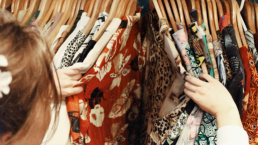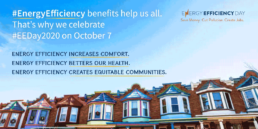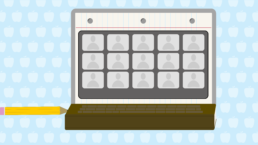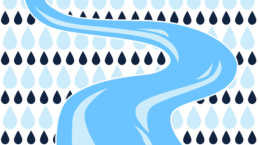Athletes Are Using Their Brands and Platforms to Effect Positive Change
Shortly before he died, U.S. Rep. and civil rights icon John Lewis said athletes are the new civil rights warriors.
“They have a great deal of influence,” said Lewis of athletes. “Sometimes history and fate just brings things together. And I think that is happening now.”
For decades, many athletes have started foundations and been active in various philanthropic projects. Recently, several athletes have found another way to make the world a better place: impact investing.
Chris Paul of the Phoenix Suns has been one of the most active impact investors. He was frustrated that his pure philanthropic efforts weren’t making the societal impact he was hoping for. He believes “philanthropy can be frustrating” at times.
Paul is one of several athletes, including tennis star Andre Agassi and basketball Hall of Famer Magic Johnson, who have invested in the Turner Multifamily Impact Fund, a type of private-equity fund focused on preserving affordable housing. Other investors in the fund include hedge fund billionaire Bill Ackman, the Rockefeller Brothers Fund, and actress Eva Longoria.
Paul has also joined fellow athletes Dwyane Wade and Carmelo Anthony in starting The Social Change Fund, which was created to help accelerate social change in communities of color and sustainably build a fair, equitable society. Some significant companies, including Goldman Sachs, are early investors in this fund.
Paul has also joined with fellow NBA players Kyrie Irving and DeAndre Jordan to make significant investments in Beyond Meat, a plant-based food company. Beyond Meat founder and CEO Ethan Brown says Paul’s “willingness to use his platform to make a difference is something that’s been evident to me from the very beginning of our relationship.”
An increasing number of today’s more socially-aware athletes are expecting their investments to lead to meaningful societal progress towards positive environmental, social and governance (ESG) outcomes – and they are willing to help lead the way.
At CoPeace Sport we help athletes (and coaches and sport organizations) maximize their ability to positively impact society. One of the tools we use is VIBE™ (Valuation of Impact Brand Equity), a proprietary tool designed to place a value on an athlete’s positive impact on society (e.g., efforts to address social and environmental problems).
An athlete’s VIBE™ score is only one aspect of his/her brand, but it can significantly impact an athlete’s brand equity as a whole. The VIBE™ score is based on publicly available information regarding an athlete’s socio-cultural and environmental impact on society, for example, ESG investments, impact activities on global/societal issues, philanthropic work, endorsements, athlete-produced content via traditional and social media, etc.
Impact investing has positively impacted the VIBE™ scores of the NBA players mentioned in this blog. The following are the players’ VIBE™ scores and their overall VIBE™ ranking among NBA players:
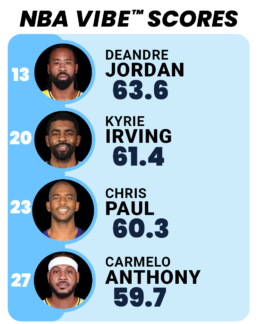
Paul has embraced impact investing because he likes the idea of positively impacting people and the planet while also earning a competitive financial return.
“That’s the fuel we need to bring in investors and reach even more communities and families,” says Paul. “When you combine a positive financial return with positive social impact, you can make a huge difference for people.”
Ken Reed is a Senior Communications Advisor at CoPeace. As a forward-thinking holding company, CoPeace is building a portfolio of carefully selected for-profit companies with measurable social and environmental impact. To learn more about impact investing, check out CoPeace’s Intro to Impact Investing.
How We Can Impact the World with Repurposed Clothing

It’s probably fair to say that the past 16 months have changed our lives forever in so many ways. Those of us who were fortunate enough to (so far) survive a global pandemic likely find ourselves with some new perspectives on life and how we live it each day. How do I want to spend my time and with whom? Is my work-life balance sufficient? What do I want to spend my money on? How can I make a positive difference in the world? What should I wear?
Wait. You’re probably wondering about that last one. It seems superficial and shallow, right? Uh…no. Let’s explore what we already know about the garment industry and, more importantly, the one proven way to dig it out of the mud.
The Garment Industry and Mass Pollution
The garment industry is one of the most polluting in the world. According to the Ellen MacArthur Foundation, the fashion industry alone uses 93 billion cubic meters of water every year – enough to meet the consumption needs of 5 million people. Further, it dumps 500,000 tons of plastic microfibers into the ocean annually, spreading into the food chain and unable to be extracted. McKinsey & Company revealed that the industry accounts for 4% of greenhouse gas emissions, with nearly 70% coming from production processes.
Then there’s the volume. The industry’s “fast fashion” operating model dramatically exacerbates the problem with a constant stream of design, production, and distribution. No longer are the days of four fashion seasons, but instead, many retailers stock their shelves with new lines every week with 52 “micro seasons” per year. In 2000, 50 billion new garments were made; nearly 20 years later, that figure has doubled, according to the Ellen MacArthur Foundation. This frenzied pace has also accelerated consumption: the average person today buys 60% more clothing than in 2000.
The Dark Secret of Clothing Production: Worker Exploitation
The volume leads to perhaps the darkest secret of the garment industry. Fast fashion companies are forced to find the cheapest labor available, and worker exploitation is rampant. Garment workers are often required to work 16-hour days, 7 days/week for poverty pay. Child labor is a common practice, and firings occur when worker unions initiate labor rights.
Sending Designer Labels Into Landfills
The final chapter of this linear economy is the endpoint of all those garments – they most often end up in landfills across the globe. A small percentage are donated to various charities, but only 10% find a new home through this pipeline, and the remaining is discarded. And according to ThredUp, 9 billion pounds of clothing are hardly worn or are just sitting idle in the consumers’ closets.
Bottom line: We must rethink how we consume and discard clothing.
Repurposing Clothing: Innovation For Good
One silver lining of the past year is that many people are already rethinking consumption and how they discard clothing. For one, we simply bought less clothing while in quarantine. This article from The New York Times references “Sweatpants Forever” and the unraveling of the fashion industry when meetings and working in offices moved virtual. Many of us also realized that we just don’t need excessive clothing to lead productive, fulfilling lives post-pandemic. Living with less not only supports our planet and society, but it provides more space – physically and mentally – to devote our time, energy, and money to elements that add true value to our lives.
Some of the companies making strides in sustainable materials include Everlane, Reformation, Patagonia, Levi’s, Tentree, and Rothy’s. You don’t have to sacrifice the brand name when purchasing an eco-friendly product.
The Social Responsibility of Discarding Used Clothing
So, we’ve identified progress in garment production. Now let’s discuss (and celebrate) a real solution to responsibly discard garments that made huge strides over the past year – a circular business model known as thrifting, resale, re-commerce, or consignment. While consumers bought significantly less apparel, 33 million consumers bought secondhand apparel for the first time in 2020, and 76% of those plan to increase this practice over the next 5 years – YEA!
Shopping Resale as a Sustainability Initiative
Shopping resale is like giving Mother Earth a huge hug in a beautiful cashmere sweater (a thrifted one, of course). An item bought secondhand displaces 17.4 pounds (7.89 kilograms) of CO2 emissions, reducing its carbon footprint by 82% on average. Resale uses fewer than 77 gallons of water (1.2 gal vs. 78.5 gal) and 34 kiloWatts of energy (4.8 kWh vs. 38.8 kWh) compared to new items on average.
Thrifting dramatically reduces the human cost of the clothes on our backs by reducing the demand for fast fashion production. As sustainability advocates, we should also rejoice that it reduces energy consumption, air pollution, prevents landfills from filling with perfectly good clothing, and keeps our oceans cleaner.
Younger generations have already caught on. Compared to Boomers, Gen-Z is 33% more likely to own re-sold clothing. Over 40% of Gen-Z and Millennials have shopped secondhand apparel in the past year. Despite the “old dog, new tricks” saying, we can learn, adapt, and join this movement with our younger communities.
Now, I know what you’re thinking, “Thrifting is yucky, garments are outdated, and designer labels are hard to find.” Allow me to introduce you to the new world of resale! This isn’t your grandma’s thrift shop.
Whether you’re a designer-brand fashionista, minimalist with an eye for sustainable materials, an offender of the repeated “groutfit” (that’s the “grey outfit” my husband proudly wears 6 or 7 days a week), or just someone who needs a new pair of jeans…there is a re-commerce site or store for you. Tradesy, ThredUp, PoshMark, The RealReal, and Kidizen are just a few online favorites. Brands like Patagonia and Eileen Fisher have their own resale shops, and your local community likely has some hidden brick-and-mortar gems.
And before you ask, returns are accepted and often free. Some resale sites offer free “clean out your closet” kits – just mail in your old duds and get credit to spend. ThredUp offers e-gift cards to favorite sustainable brands with a 15% bonus for all clothes they accept from your closet. You can even find some brand-new items (with tags still attached).
When practicing sustainability, it’s time to think beyond climate change initiatives, alternative energy, recycling, and organic farming. It’s fascinating to think about the positive impact of advocating for thoughtful clothing and garment production, consumption, and disposal. Every one of us can transform our future when making current-day decisions. I challenge you to reconsider how, where, and why you shop for the clothing for your family and try your next shopping trip at a resale store. Upcycle the clothes you don’t currently wear to a resale site. And spread the word. Together, we can make a difference.
Meg Masten is the Chief Relationship Officer at CoPeace. As a forward-thinking holding company, CoPeace is building a portfolio of carefully selected for-profit companies with measurable social and environmental impact. To learn more about impact investing, check out CoPeace’s Intro to Impact Investing.
CoSpo: Changing the World Through Sports
I love sports.
I’ve been involved in sports in one way or another my entire life. I love the competition, the teamwork needed to be successful, the human drama, the camaraderie, the physical fitness aspect, and the lifetime friendships that develop.
But I also love sports because they can bring out the best in humanity. Sports can positively impact the world in ways well beyond the playing fields, courts and ice rinks.
Nelson Mandela said it perfectly, “Sport has the power to change the world, the power to inspire and the power to unite people in a way little else can – it is an instrument for change.”
Sport is certainly a powerful cultural institution, and it can be tapped for good.
“The rituals of sport engage more people in a shared experience than any other institution or cultural activity today,” said author and public policy consultant Varda Burstyn.
Through the years, there has been a lot of excellent philanthropic work done through sports. At CoPeace, we celebrate that fact and encourage it. However, we think there’s tremendous potential to impact the world via sports well beyond the limitations of pure philanthropy.
That’s why we launched CoPeace Sports, or CoSpo, this week. CoSpo is a wholly-owned sports impact subsidiary and is part of the CoPeace holding company portfolio. CoSpo’s mission is to help athletes, coaches and sport organizations maximize their ability to positively impact society.
CoPeace Sports is legally designated as a public benefit LLC (PBLLC). As such, we can help sports entities of all kinds enhance their positive impact activities through both non-profit and for-profit endeavors and activities.
We have a lot of sports-related experience on the CoPeace team. We’ve seen how sports can bring people together in pursuit of a common cause, and we want to leverage that uniting aspect of sport for the good of society.
“Sports is just such a powerful thing,” said Ed Tepper, CoPeace’s chief operating officer. “It taps into the emotions, and we have an incredible opportunity here to use that power and direct it in a positive way that goes far beyond anything philanthropy can do—to create self-sustaining opportunities for companies to do good, help others and make money at the same time.”
CoPeace Sports has been created to be a true win-win endeavor and I’m excited to see the positive impact the company will have as it grows.
Ken Reed is a Senior Communications Advisor at CoPeace. As a forward-thinking holding company, CoPeace is building a portfolio of carefully selected for-profit companies with measurable social and environmental impact. To learn more about impact investing, check out CoPeace’s Intro to Impact Investing.
October 7 is Energy Efficiency Day

Some people might say energy conservation is a big problem best handled by government and industry. While this can certainly a significant part of the solution, there are many things that we can do now as individuals to create positive change by incorporating energy conserving practices in our homes or offices!
Why not celebrate Energy Efficiency Day by taking actions that all of us can do? You can make a difference today by starting new habits and traditions which are both good for the planet and good for your financial wellbeing. Here are some suggestions that benefit everyone:
- Use what you need and unplug the rest! Every electrical item doesn’t need to be always on or plugged in. Adopt a use when needed approach.
-
- Turn off lights when not necessary
- Unplug electrical items that are not used regularly
-
- Run the dishwasher and laundry machines during off-peak hours to reduce your utility bills and take a load off your power grid
- Install energy conserving devices such as thermostats, LED lights, timers, etc., to match peak and off-peak usage levels
- Choose Energy Star Appliances and Equipment
- Take a walk or ride a bike more often and drive less
- Take the stairs instead of an elevator or escalator
- Consider solar panels for electricity, heat, and hot water to reduce power grid usage.
- Install water-saving plumbing fixtures, toilets, shower valves, shower heads which ultimately reduces energy consumption.
Energy efficiency is not only good for the world and good business, and it’s great for your wallet too! Save the world and save money by conserving energy today. Happy Energy Efficiency Day!
For more energy saving tips please visit the official Energy Efficiency Day website.
Ed Tepper is the Chief Operating Officer and Chief Finance Officer at CoPeace. As a forward-thinking holding company, CoPeace is building a portfolio of carefully selected for-profit companies with measurable social and environmental impact. To learn more about impact investing, check out CoPeace’s Intro to Impact Investing.
A Commitment to Sacred Spaces: Celebrating National Public Lands Day
2020 is a year for the record books — and if climate change wasn’t top of mind for you last year, it’s hard to ignore this year. Our forests are burning, oceans are churning, and the effects of climate change are undeniable. There’s never been a more obvious time to commit to protecting and preserving the sacred spaces on our beautiful planet… we should all be on a quest to make sure the fires and hurricanes don’t win. Combating climate change is a foundational value for us at CoPeace.
Of the many ways we can each take part to be the change we want to see in the world, celebrating National Public Lands Day — which was last weekend — is at the top of our list. National Public Lands Day is the largest single-day volunteer effort to celebrate the connection between people and green space. It’s a day to get out and make a difference, however — and wherever — you can.
The History of National Public Lands Day
In 1994, three federal agencies and over 700 volunteers launched the first National Public Lands Day. It’s grown substantially over the last few decades. Each year, hundreds of thousands of volunteers participate in land clean-up events, tree planting events, seed collection, wild animal habitat improvements, and more. There’s a tradition on National Public Lands Day to encourage people to visit parks and green space all over the country — it’s a fee-free day at many federally managed parks and natural areas.
2020 Theme: “More Ways to Connect to Nature.”
This year things look a little different (or let’s face it… a lot different) in terms of getting out and about and involved in group activities. So if you didn’t get out in the fresh air to enjoy our beautiful lands, we understand. Due to social distancing guidelines and various local regulations that prevent large gatherings and volunteer events, National Public Lands Day hosted a series of virtual events this year. The virtual events allowed people to connect to iconic parks, national forests, marine estuaries, and various other land sites via the internet. Just like everyone’s doing this year — we’re finding new ways to support causes we care about here at CoPeace. We’re deeply committed to environmental stewardship and protecting our planet, and climate crisis solutions is at the top of our list of priorities. We want to do everything in our power to preserve our planet for future generations. That’s why we’ve invested in our holdings, Uncharted Power and AST. Uncharted Power is working on data infrastructure technology to provide universal access to clean, reliable, affordable power. AST is a new-generation waste management solution using plasma technology that is environmentally-friendly, safe, and financially viable.
We’re committed to positive change and protecting our planet, not just on National Public Lands Day, but also every day.
Lindsay Hope is a copywriter and marketing strategist with CoPeace. As a forward-thinking holding company, CoPeace is building a portfolio of carefully selected for-profit companies with measurable social and environmental impact. To learn more about impact investing, check out CoPeace’s Intro to Impact Investing.
“Basic” Education

After changing from my sleep pants to my “work” sweatpants, and right before jumping on the first of what seems like an endless array of video meetings, I had some time to reflect on our recent household “emergency.” My daughter’s computer charger has stopped working.
I’ll spare you the boring details, but it took two very stressful days of watching the battery percentage helplessly drop before we were able to get a new charger. This was an emergency, since my daughter, like a large portion of the children around the world, is going to school remotely and a working computer is required for school education…a computer! Let that sink in.
School supplies used to be a notebook, a pencil, and a book (and an optional Transformers lunch box …if you were cool).
Through this pandemic we have seen a great push for social equality. It has been a problem for so many years and education sits right smack in its center of the issue. The access and quality of education are just a few of the issues that widen the divide in our society. Internet connectivity, a computer, and even electricity are luxuries a lot of us take for granted, and we only see their true value when they are suddenly gone. If you have kids, just trying shutting off your WiFi for five minutes and see your sweet child instantaneously morph into The Incredible Hulk!
As we try and plan for a better future on the other side, we cannot ignore the lessons we learn during the pandemic. We now know what the future will look like, we now know what the future will require from our children to be successful. So that is where we should invest our money.
We should invest in a future where each child has what they need to succeed. This way we not only become a more fair and just society, but we also become a more successful and prosperous society, where bright minds have the right platform to excel and ideas can flourish. This is not only the right thing to do socially, but the right thing to do financially!
At CoPeace we believe in investing in companies who create those platforms and the type of impact that changes generations. We do so, not by being psychic or pretending we know more than anyone else, but by taking note of the world around us and the direction it is heading toward.
Hanan Levin is a Senior Investment Advisor at CoPeace. As a forward-thinking holding company, CoPeace is building a portfolio of carefully selected for-profit companies with measurable social and environmental impact. To learn more about impact investing, check out CoPeace’s Intro to Impact Investing.
What National Water Quality Month Means To Us

“Aappovaa Annam Shariram Annadam”
This Sanskrit verse implies that water (Aappovaa) is the basis for food, and the human body (shariram) is composed (survived) of food (annadam). Hence, it is utmost essential to save water.
August is National Water Quality Month. This reminds us to think of how valuable the water resources are like oceans, lakes, and rivers to preserve, which provide clean and safe water to us. Safe, clean, potable water should be a right for everyone, but it’s becoming a privilege nowadays. Many countries around the world are grappling with the issue of providing clean water.
In under-developed countries or developing countries, getting drinkable water to everyone is becoming more of a challenge to poor and lower-income families.
As a developing country, India is on the brink of a water crisis. Poor management of water resources and water pollution are the main reasons for this crisis. Many rivers flow throughout the country. So, they are the main sources for drinking water and household chores. But they are polluted regularly. The situation gets worse when people wash their clothes and bathe in river water.
On my last trip to India, I saw how lower-income groups of people have to struggle to get clean drinking water. People living in rural areas have to walk miles every day to get a few gallons of potable water for their families. Additionally, the majority of the population in India does not get access to clean tap water. During the monsoon months, most people who have access to clean tap water, will still boil the water before drinking.
Most of the middle-income and upper-income families use their own reverse-osmosis filters to treat tap water when it is available, but in most cities, it is supplied for just a few hours each day. Corporations supply drinking water in trucks to lower-income families who boil it to make it fit to drink.
This is not just India; access to clean water does not exist in many communities throughout the world. Unfortunately, having high quality, unpolluted water is continuously taken for granted, especially by developed countries. In the US, we use water for everything from drinking to recreation without thinking twice about it, but what most Americans don’t realize is, not all water is created equal, and having immediate access to clean water is a privilege, not a right.
How do we prevent harming the water quality?
It is important to only flush the three Ps (pee, poop and [toilet]paper). Flushing other items could contaminate the wastewater system, causing downstream water quality issues, or it could create major plumbing issues, including broken pipes.
Here are a few things we can do to prevent water pollution:
-
- Make sure to dispose of any paint, pesticides, cleaners, chemicals, and other items at your local hazardous waste site.
- Some landscaping pesticides and fertilizers are harmful to the water supply. When choosing your landscaping products, it is important to choose phosphorus-free products. It is also important not to overwater your lawn, since that can cause runoff of fertilizers and pesticides into the water supply.
- Clean any oil leaks or spills with either kitty litter or baking soda, then dispose of that in the trash.
- Dispose of pet waste as soon as possible.
- Keep your gutters and sidewalks clean, so debris does not get washed into the storm drain.
- Sweep paved areas around your house, rather than hosing them down.
You never know the worth of water until the well runs dry, so Conserve water, Conserve life.
Aarti Karnik is the Director of Web Development with CoPeace. As a forward-thinking holding company, CoPeace is building a portfolio of carefully selected for-profit companies with measurable social and environmental impact. To learn more about impact investing, check out CoPeace’s Intro to Impact Investing.


